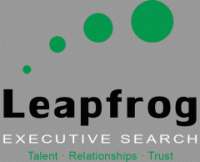Following a Tough Act
Category : 2021
Before America’s Got Talent, American Idol, and The Voice catapulted unknown wannabes to stardom, scores of people in the early decades of the 20th century searched for a stairway to the stars in vaudeville. Each show’s 10-15 unrelated acts might include acrobats, animal shows, comedians, musicians, and lecturing celebrities. If you had the good fortune of following the human frog, Guy Visser and his singing duck, or the guy swinging a chair held by his teeth, you had a good chance of leaving a memorable impression with the audience. But if Jack Benny, Bob Hope, Bert Williams, or Eddie Foy and the Seven Little Foys performed before you, you’d likely look wistfully from off-stage and sigh to yourself, “That’s a tough act to follow.”
After a carefully planned and well-executed succession and selection process, in February 2020, Michael Miebach was named CEO at Mastercard as Ajay Banga transitioned from CEO to Chairman. By any measure, Ajay is a tough act to follow. During his tenure, revenues tripled, net income grew sixfold, and the company’s market cap ballooned from less than $30 million to over $300 million. While the coming months will measure the outcome of the move, Mastercard’s planning and Miebach’s preparation clearly position him for success.
You don’t need to achieve stellar results to be a hero if you are hired to turn around a situation where your predecessor floundered. Examples from business, non-profits, and every other corner of life give evidence that following a superstar has its own set of risks and challenges. As England’s Prince Charles walked behind his father’s casket during the funeral of Prince Philip, one can’t help but wonder if Charles’ mind drifted to when he will walk behind the bier of the beloved Queen Elizabeth II, thinking to himself, “Mummy is a tough act to follow.”
Consulting firm McKinsey reports that after two years, between 27 and 46 percent of executive transitions are measured as disappointing or an outright failure. Those numbers haven’t changed in over a decade. It is worth noting that the executives who stumbled were intelligent, capable, and brought a history of success and results in a previous executive leadership role.
There are several steps an executive can take to help ensure success when following someone who previously crushed a role. These are adapted from HBR’s article titled, How Insider CEOs Succeed, cited below.
Get out of the Shadows
Someone like Indra Nooyi, Jack Welch, Bill Gates, or Ursula Burns can leave an enduring shadow from which a successor quickly needs to emerge. If the new executive is promoted from within the company, he or she also must quickly step beyond the shadow created by a previous role. More than one talented leader has struggled to gain broad acceptance across an organization because people were slow to embrace the person in a broader or different role.
Act for the Future, While Respecting the Past
After making even a minor change in the business, any executive following a star is likely to hear, “Marsha would have never done that,” or “I knew someone from Ops was not right for that role,” or “He is forgetting who helped him get where he is.” While prudently protecting a predecessor’s legacy, a new executive easily becomes another McKinsey statistic if he/she does not concisely and with certainty chart a course for the future. The plan may require adjustment along the way, but a new CEO will struggle if people don’t see a clear path to the next milestone in the journey.
Get Over It and On with It
An internal promotion to a senior role, or a move from a competitor places before a new executive an enticing and potentially perilous opportunity to fix the past. If a previous leader ignored or allowed inequities or disparities in diversity, pay, and opportunities, a new leader has an opening to set a new course and clean up the past. The danger lies in the temptation to use new levels of authority to settle a grievance or resolve a grudge with a former peer who is now a direct report. A sure way to burn through relational capital and create distrust in a new team is for a leader to invest time and energy in fixing what needs to be forgotten.
Keep the Right Plates Spinning
Any new CEO or senior executive finds the job, at least initially, quickly takes on the feel of the guy spinning plates on the Ed Sullivan show. (The Guinness record is a couple in Thailand keeping 108 plates simultaneously in motion.) An enterprise is successful when the leaders of the company focus on and balance their energies toward generating cash flow, growing consistently, creating profitability and shareholder value, investing in the people that ensure success, and managing assets effectively. It is easy for an internally promoted executive to stay involved in a previous role or for any leader to favor one aspect of the business over another. Companies with a record of strong, repeated performance are organizations where the leaders know how to balance the drivers of success.
Make Your Leadership About Influence, Not Authority
Ken Blanchard is right when he says, “The key to successful leadership today is influence, not authority.” A new leader improves the likelihood of success if his or her investment in executing a strategy is married to a commensurate investment in building the relationships that ensure the results endure. Listening until people feel heard, communicating with transparency, caring enough about a relationship to engage in and resolve a conflict, telling the truth, and keeping commitments are fundamental to building the relational web that can protect a leader when they miss the bar and fall.
Two reliable executive resources offer a deeper look into this subject:
How Insider CEOS Succeed, https://hbr.org/2020/03/how-insider-ceos-succeed.
Why Smart Executives Fail, https://mba.tuck.dartmouth.edu/pages/faculty/syd.finkelstein/causes.html.
